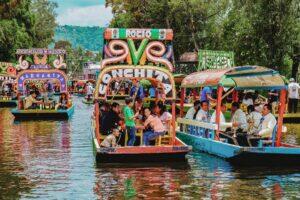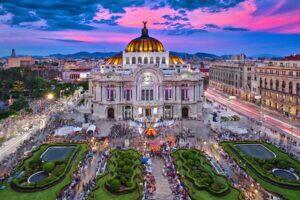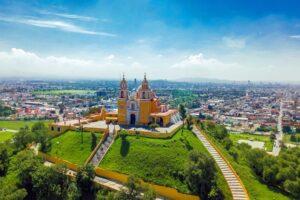Fodor's Expert Review Alameda Central
The manicured gardens of the Alameda Central at the western edge of the Centro have been the heart of Mexico City life since the height of the city's pre-Hispanic glory, when informal markets were held here. Strolling around the park today remains a great way to break up sightseeing in the neighborhood. During the week it's quite lively, but you'll be able to find a shaded bench for a few moments of rest before heading off to more museums. There are food vendors throughout the park, selling all kinds of snacks, from ice cream to grilled corn on the cob. In the early days of the viceroyalty, the Inquisition burned its victims at the stake here. Later, national leaders, from 18th-century viceroys to Emperor Maximilian and the dictator Porfirio Díaz, envisioned the park as a symbol of civic pride and prosperity. Life in Mexico, one of the quintessential texts on daily life in the colonial period, written by the British countess Frances Calderón de la Barca, describes how women... READ MORE
The manicured gardens of the Alameda Central at the western edge of the Centro have been the heart of Mexico City life since the height of the city's pre-Hispanic glory, when informal markets were held here. Strolling around the park today remains a great way to break up sightseeing in the neighborhood. During the week it's quite lively, but you'll be able to find a shaded bench for a few moments of rest before heading off to more museums. There are food vendors throughout the park, selling all kinds of snacks, from ice cream to grilled corn on the cob. In the early days of the viceroyalty, the Inquisition burned its victims at the stake here. Later, national leaders, from 18th-century viceroys to Emperor Maximilian and the dictator Porfirio Díaz, envisioned the park as a symbol of civic pride and prosperity. Life in Mexico, one of the quintessential texts on daily life in the colonial period, written by the British countess Frances Calderón de la Barca, describes how women donned their finest jewels to walk around the park even after independence. Over the centuries it has been fitted out with fountains and ash, willow, and poplar trees; through the middle of the 20th century, it became a popular gay cruising ground. Today, the Alameda is one of the best places in town to see people from all walks of life, mingling in the shadow of some of the city's most iconic buildings.
READ LESS








